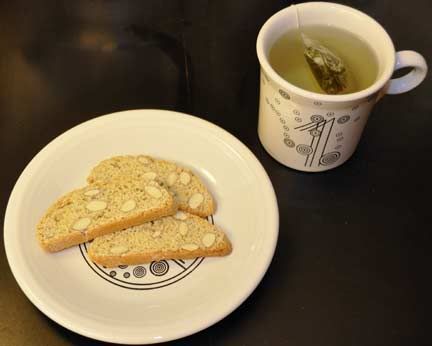
Today was supposed to be Latin Food Day at DD#2's school. More on the "supposed" later. This time the kids can bring any modern Italian food, so we have been discussing the possibilities for a week or so. I suggested Cantuccini. As DD has Latin last period, she thought I should also bring espresso. They can dunk, plus get a recharge for the rest of the afternoon.
Cantuccini, also known as biscottini di Prato, are a traditional Italian almond biscotti from Tuscany. More specifically from the town of Prato and called biscottini because of their smaller size. Like other biscotti they are twice-baked cookies which are meant to keep. Originally cantuccini were flavoured with anise seed, but they have evolved and many variations can be found today, both sweet and savoury. Although they originated in Tuscany, they can now be had most places in Italy. We were able to indulge in them in a number of different spots last summer.
Biscotti have a long history. The word biscotto derives from “bis,” Latin for twice and “coctum” or baked, which became “cotto,” or cooked. Roman biscotti were designed as travel food. The unleavened breads were baked first to cook them, then a second time to dry them out. This made them last well as sustenance for long journeys. Pliny boasted that they would be edible for centuries and biscotti were a staple for the Roman Legions. Now I can't attest to the centuries part, but they do keep well for quite a while!
During the Renaissance cuisine flowered along with everything else, and biscotti emerged in Tuscany. The dry, crunchy texture was deemed to be perfect for dunking in the sweet local wine. Even today many people still agree that dipping cantuccini into Vin Santo is a perfect way to end a meal, or while away an hour at a café. (But should you choose to have coffee with your cantuccini, do not order cappuccino after 11:30am. Cappuccino is a morning-only drink in Italy.)
These days cantuccini are dipped in the Tuscan Vin Santo, sparkling wine, or coffee. And I like them with tea. This particular recipe is adapted from Baking with Julia, by Julia Child, and a few other sources. While Julia uses vanilla, I've seen some other recipes that call for using almond extract instead. Julia likes blanched almonds, but some other variations leave the skins on; the almonds can be toasted before mixing into the dough, and another uses a pinch of saffron to give the biscuits a bright yellow colour.
Now back to the "supposed" to be Latin Food Day. Two cases of swine flu have been reported in our county and all of the schools are closed until at least Monday. Therefore, these won't be going to school today. I spoke with the Latin teacher and she is planning to reschedule Latin Food Day one day next week. With school nearly out, missing two days puts a lot of pressure on getting everything finished. But everyone has to eat, right?
And just a note: these make wonderful gifts!
This recipe goes together very easily. It is one of simplest biscotti recipes I've ever made and I highly recommend it. Let's gather our ingredients:
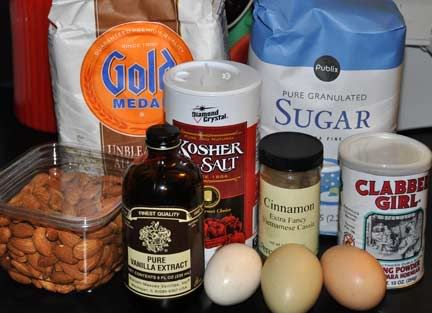
Ingredients in the bowls (and I do love the Fiesta mixing bowls):
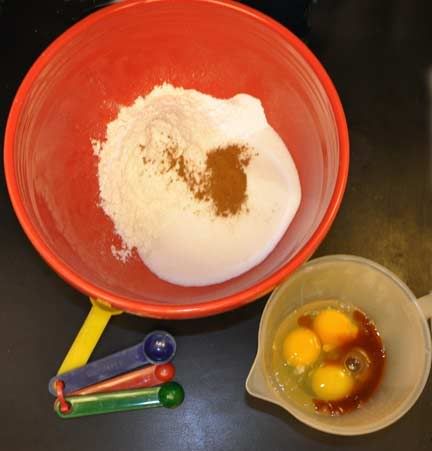
Mixed up dough:
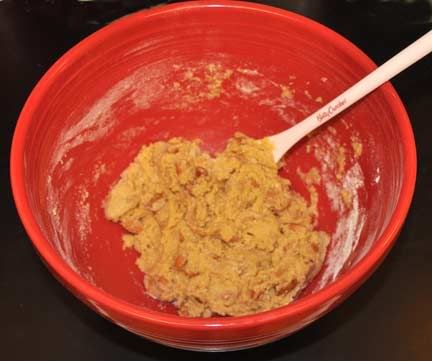
Ready to knead:
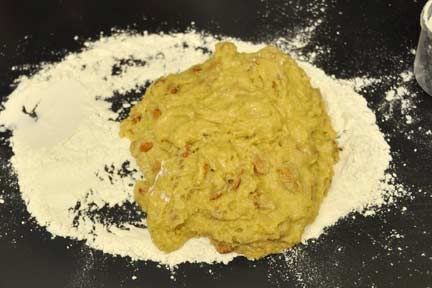
Kneaded and divided in half:
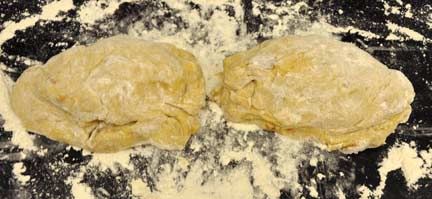
Rolled into logs and on the baking sheet:
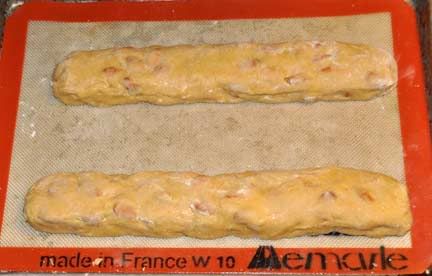
Loaves cooling after 1st baking:

Starting to slice:
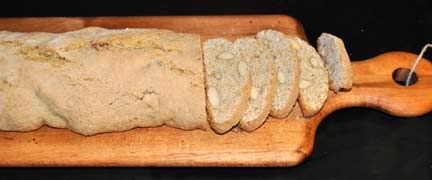
All sliced:
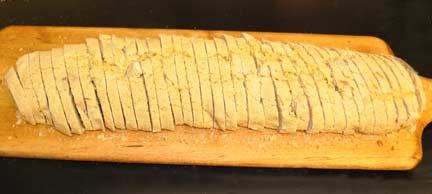
And ready for 2nd baking:
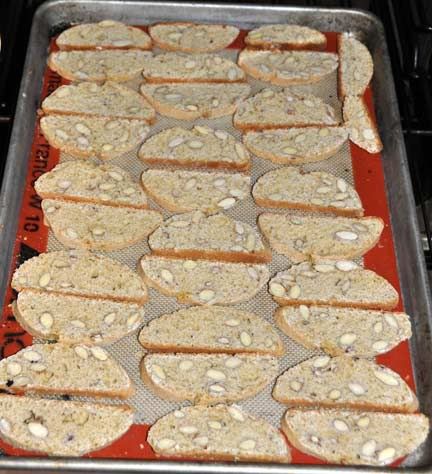
Slices are cooling (and I was getting hungry!)
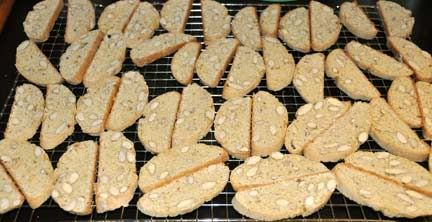
Dunk away!
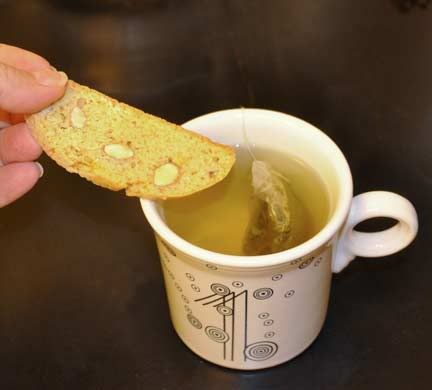
Cantuccini served with green tea using Fiesta dinnerware in the Champagne pattern:

| Cantuccini 2 cups unbleached all-purpose flour 1 cup sugar 2 tsp baking powder 1/2 tsp cinnamon (I use Vietnamese cinnamon, which is more strongly flavoured.) 1/4 tsp kosher salt 1 1/2 cups whole almonds, with skins 3 large eggs 1 Tbsp vanilla extract (yes that is tablespoon) Preheat the oven to 350°F. In a bowl, combine all the dry ingredients and stir. Add the almonds and mix well. In another bowl, whisk together the eggs and vanilla extract. Pour the wet ingredients into the dry ingredients and stir. Turn the dough out onto a floured workspace and begin to gather it together. Knead it for a few minutes until it comes together in a firm dough. It helps to keep some extra flour on hand in case it sticks. Divide the dough in half and shape it into two 12” logs. Place the logs on a baking sheet lined with parchment or a Silpat and bake for half an hour. The logs will rise and be lightly golden brown. Transfer the logs to a wire rack and let cool to room temperature. When the logs are completely cool, slice on the diagonal into one-quarter-inch slices. Lay the slices on a baking sheet lined with parchment or a Silpat. Bake for another 10 to 15 minutes, or until the cantuccini are dry and lightly golden. Cool completely. Cantuccini can be stored in an airtight container for up to a week. (Not centuries!) Notes: 1. You can substitute the zest of one lemon and 2 Tbsp honey in place of the vanilla in this recipe. 2. These can also be varied by using hazelnuts, pistachios, pine nuts or any other nuts. And you can toast them first, if you like. If using pine nuts, try adding the zest of 1 lemon and 2 Tbsp of lemon juice instead of the vanilla extract. 3. Try adding a bit of anise seed to the recipe for the more traditional flavour. 4. If you like, you can brush the logs with a beaten egg yolk and sprinkle with sugar before baking. 5. Count on getting 5 to 6 dozen cantucinni from this recipe. |


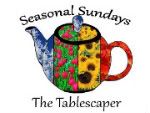


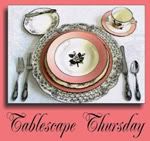








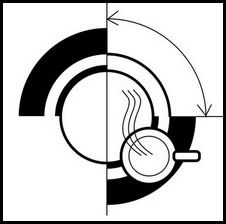

 Alabama Time
Alabama Time Paris Time
Paris Time Venice Time
Venice Time










4 comments:
Looks good AND easy! I might make these sometime soon. Thanks for sharing.
Thanks for sharing the recipe Becky and the pics.It's looking yummy. I'm going to make these sometime, I like dunking into my coffee.
Healing thoughts sent your way. (((ERICA)))
Thank you so much ladies. You all will love how easy these are to make.
They look delicious Becky!
Post a Comment